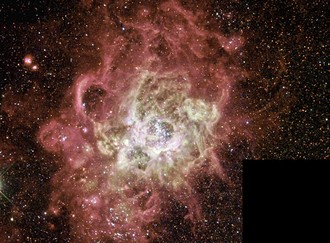
Globular clusters are one of the simplest dynamical systems. This does not mean, however, that the knowledge of their evolution and interactions between the various physical processes operating in their life is a simple matter. Globular clusters associated with the Milky Way are among the oldest objects in the Galaxy. Their ages are comparable to the age of the Universe. They are characterized by a number of interesting observational features. Some of the most interesting are: the correlation between the number of binaries, and the mass of the cluster - the larger the number of binaries, the lower mass of the globular cluster and the correlation between the slope of the present day mass function (PMF) and the cluster concentration parameter - the higher the concentration the higher the slope of the PMF.Thanks to a numerical code MOCCA, developed at NCAC, the study of the evolution of real-size globular clusters has become a feasible task, to be completed on time of the order of days! MOCCA code is now one of the best numerical codes
used to study the evolution of large stellar systems, under the influence of various physical processes. It provides detailed information on the evolution of the cluster and the evolution of stars and binaries, which live in the cluster.
Within the framework of international cooperation of Mirek Giersz and Arkadiusz Hypki from NCAC with Nathan Leigh from ESA and his collaborators there an attempt was made to explain the observed correlation between the mass of the cluster and the number of binaries and the concentration parameter and the slope of PFM. These correlations can either be reproduced from universal initial conditions combined with some dynamical mechanisms that transform the cluster structure and PFM over time, or it must arise during the gas-embedded phase of cluster formation. There were performed more than 130 MOCCA dynamicalsimulations of star clusters characterized by different initial: masses, sizes, concentrations and MF... For the range of initial conditions considered here, our results are consistent with an universal initial binary fraction about 10% and an universal initial MF resembling the standard Kroupa distribution. However, we require some dependence of the initial concentration on the total cluster mass, such that the concentration
increases with increasing cluster mass. Thus, we conclude that the dynamical processes considered here could not alone have reproduced the observed distribution of concentrations. The origin of this trend is likely connected to the gas-embedded phase of cluster evolution. Specifically, we argue that cluster expansion due to rapid gas expulsion could account for the least concentrated clusters with the flattest MF, and that cluster contraction due to prolonged gas retention could help to create the most concentrated clusters with the steepest MF. More info in the paper: “The state of globular clusters at birth: emergence from the gas-embedded phase”, Nathan Leigh, Mirek Giersz, Jeremy Webb, Arkadiusz Hypki, Guido De Marchi, Pavel Kroupa, Alison Sills.
More details on the MOCCA code.
Photo: Emerging globular cluster NGC 604 in M33.
Credit: NASA and the Hubble Heritage Team (AURA/STScI).






